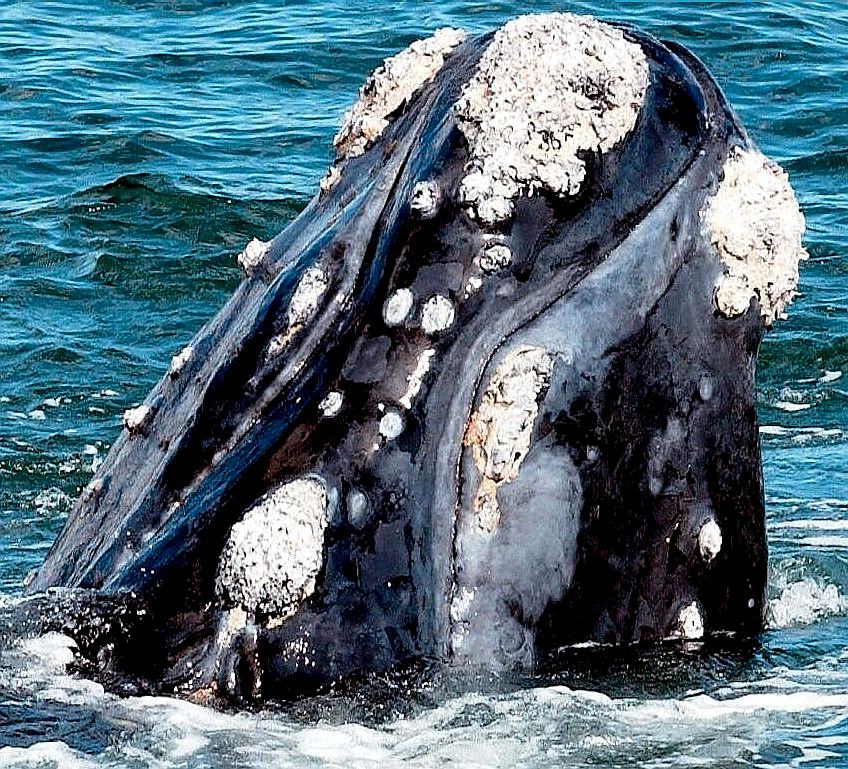
Right whales or black whales are three species of large baleen whales of the genus Eubalaena: the North Atlantic right whale (E. glacialis), the North Pacific right whale (E. japonica) and the Southern right whale (E. australis).
Black Whales
include: North Atlantic right: Eubalaena glacialis; Southern right: Eubalaena australis; North
Pacific
right: Eubalaena japonica.
They
grow up to 60 feet long and weigh up to 100
tons. These animals provided the backbone of the American commercial whale fishery from their early colonial
(New
Bedford, Nantucket)
shore-side exploitation until the end of the nineteenth century.
Commonly termed “black whales” by American whalers, their hunt was called “right whaling” for their marketable
baleen, similar to the great right whale of European commerce, the bowhead whale.
These little-understood animals were also called Nordcapers or sletbacks and were seldom hunted by Europeans who considered them commercially inferior to bowheads. They made less oil, had coarser baleen, fought viciously, and frequently sank when killed.
With a relatively small population in the North Atlantic, Eubalaena glacialis numbers were quickly reduced by colonial whalers who took advantage of their regular migratory routes. The southern species and the North Pacific species, however, provided sustained commercial advantages through heavy exploitation for many decades.
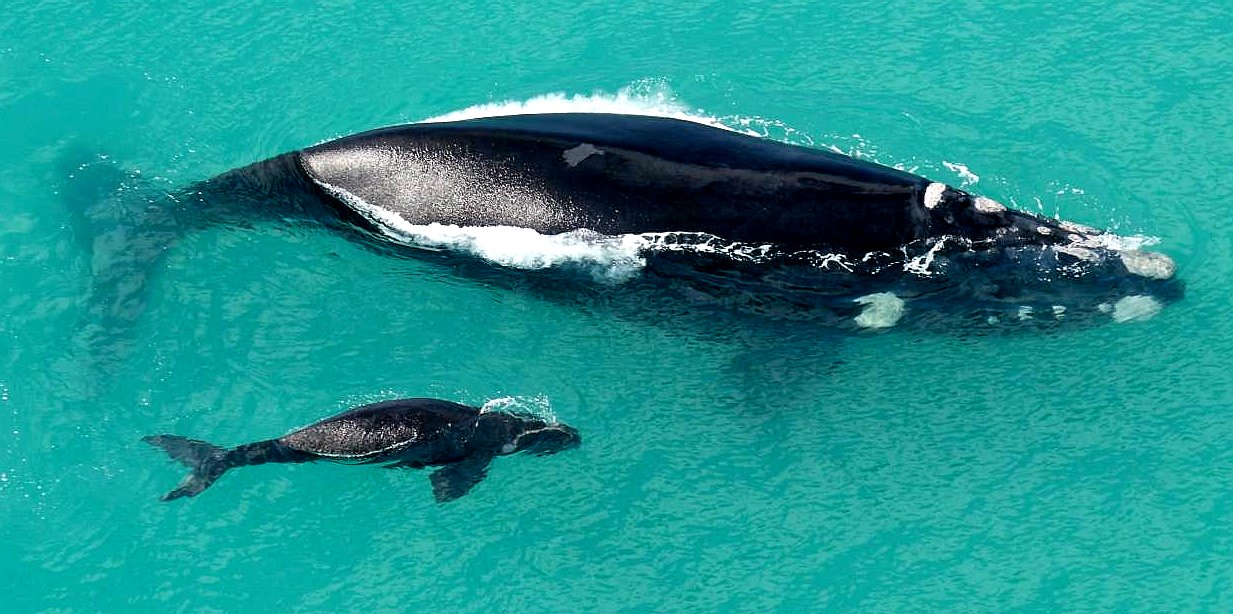
Today, Eubalaena glacialis and Eubalaena japonica are the most threatened great whales on earth. The unreported killing of North Pacific right whales by Soviet commercial whalers in the twentieth century almost completely extirpated the species.
Around 400 individuals currently make up the population of North
Atlantic right whales which face threats from marine traffic, pollution
(marine litter ingestion) and entanglement in fishing nets.
Although the whales no longer face pressure from commercial whaling, mankind remains by far the greatest threat to these species: the two leading causes of death are being struck by ships and entanglement in
fishing
gear.
Ingestion of plastic marine debris also presents a growing threat. For the North Atlantic right whale, for example, whose population was estimated at 411 in 2017 which was down from 451 in 2016 and 458 in 2015, these two anthropogenic factors alone account for 48% of all known right whale deaths since 1970.
Entanglement is now the greatest source of mortality in the North Atlantic right whale, with 85% of recent mortalities (2010-2015) caused by entanglement in fishing
lines. More than 85% of North Atlantic right whales have been entangled at least once.
It
is a shame that SeaVax
machines were not considered important enough to attract funding from
the European
Commission under their Horizon
2020 schemes in 2017 and 2020. It is also a pity that the inventors
of SeaVax
are situated in the United Kingdom during Brexit, that is likely to have
had a bearing on such decision making - even though technically
qualifying. This does not prevent other concerns from developing
machines inspired by SeaVax,
where the Cleaner Ocean Foundation would offer expenses only
consultancy, as a not for profit organisation, in the interests of
saving whale lives and increasing cetacean populations.
In 2017, at least 118 right whales were in the Gulf of St Lawrence, or roughly a quarter of the local population, which previously fed in summer and fall months in the Bay of Fundy and Roadway basin. The habitat shift moved this population away from existing conservation efforts and into the path of busy shipping lanes and also snow crab fisheries where Fisheries and Oceans Canada doubled the quotas in 2017.
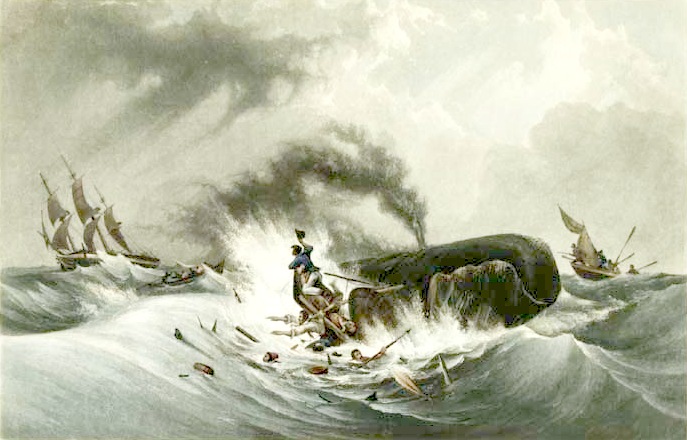
Being polyamorous by nature, female whales mate with up to 7 males during the breeding season from July to October and return the following year to give birth to a single calve. Males do not fight amongst one another or experience feelings of jealousy when it comes to pairing up with females for mating.
The female whales work on a 3-year cycle which includes one year of carrying a calve, a year taking care of their new-born and one year recovering and rebuilding their food reserves before starting the cycle once again.
Calves are usually born a dark-bluish colour but in some cases, about 4% of calves are born white. Due to a sex-linked genetic trait, all the calves born white are male and their colour darkens with age.
Whales usually search for food on the surface of water but will on occasion dive for food. They mostly eat small
plankton called copepods but also indulge in
krill, mysids, plankton and other tiny crustaceans.
Individual whales can be identified from the unique pattern of white markings (callosities) on their head. This has been utilised to track whale movements via
photographs. There are several catalogues of such photos that have been compiled. DELWP's Barwon South West Regional Services have been recording whale sightings in Victoria for many decades and co-ordinates the Southeast Australia Southern Right Whale Photo Identification Catalogue which now contains over 1000 images from across several states.
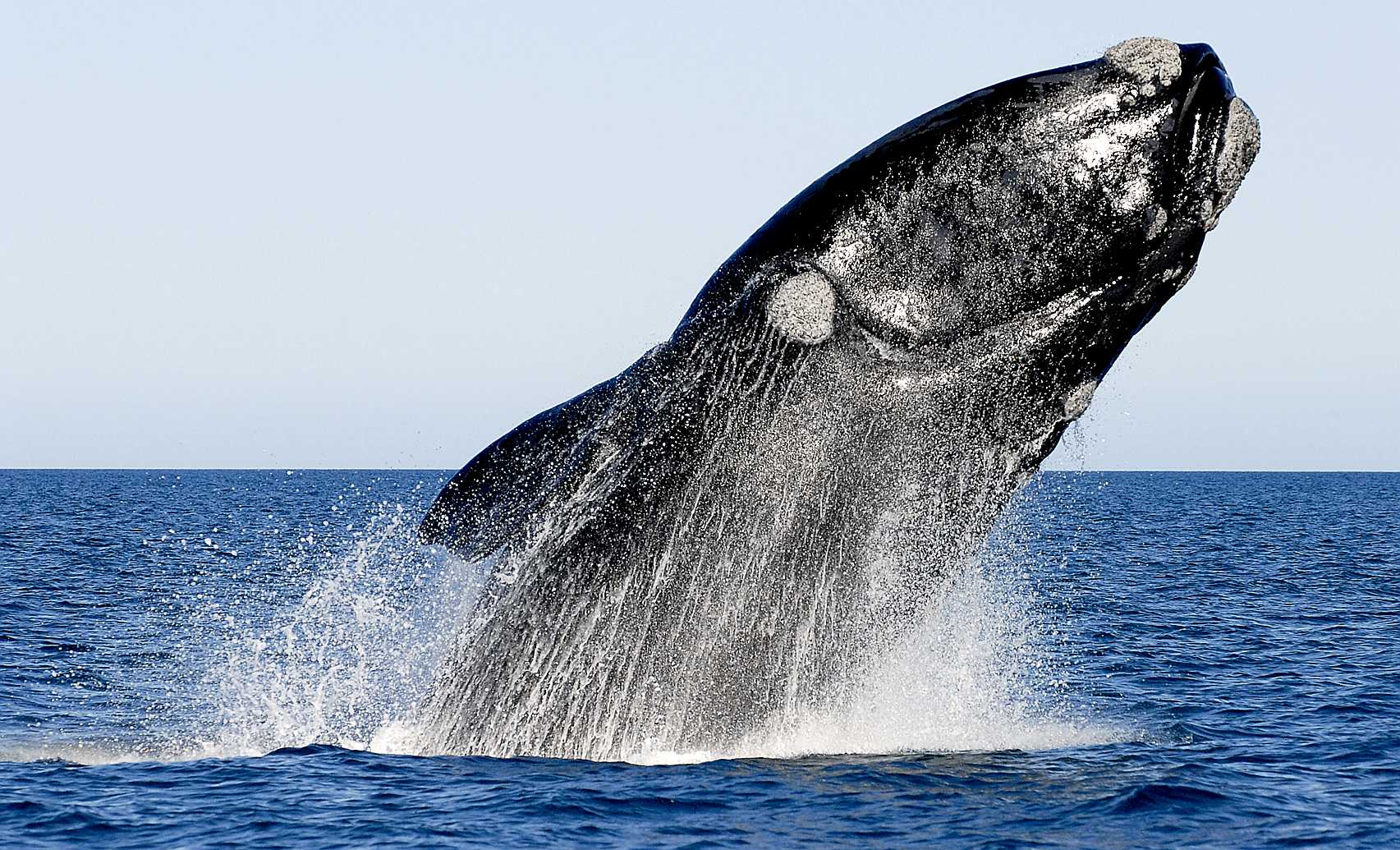
FACING EXTINCTION
The North Atlantic right whale is one of the world’s most endangered whales. Once common along the eastern U.S. seaboard, the whale was hunted to near-extinction by the 1750s. While no longer pursued for its oil, meat and bones, these whales continue to be the victim of ship strikes and entanglement in fishing gear, which can result in protracted, painful deaths. Right whales are declining so quickly that they may be functionally extinct by 2040 if more isn’t done to save them.
In its 2020 update of its "Red List of Threatened Species," the International Union for Conservation of Nature declared North Atlantic right whales “critically endangered,” the most serious category of risk, with only about 400 animals left and fewer than 250 adults. The IUCN lists ship strikes and entanglement as the primary threats to the species, noting that climate change is exacerbating such risks by pushing the animals into new habitat areas as they follow their food.
Hunting
black whales is forbidden by
international
law.
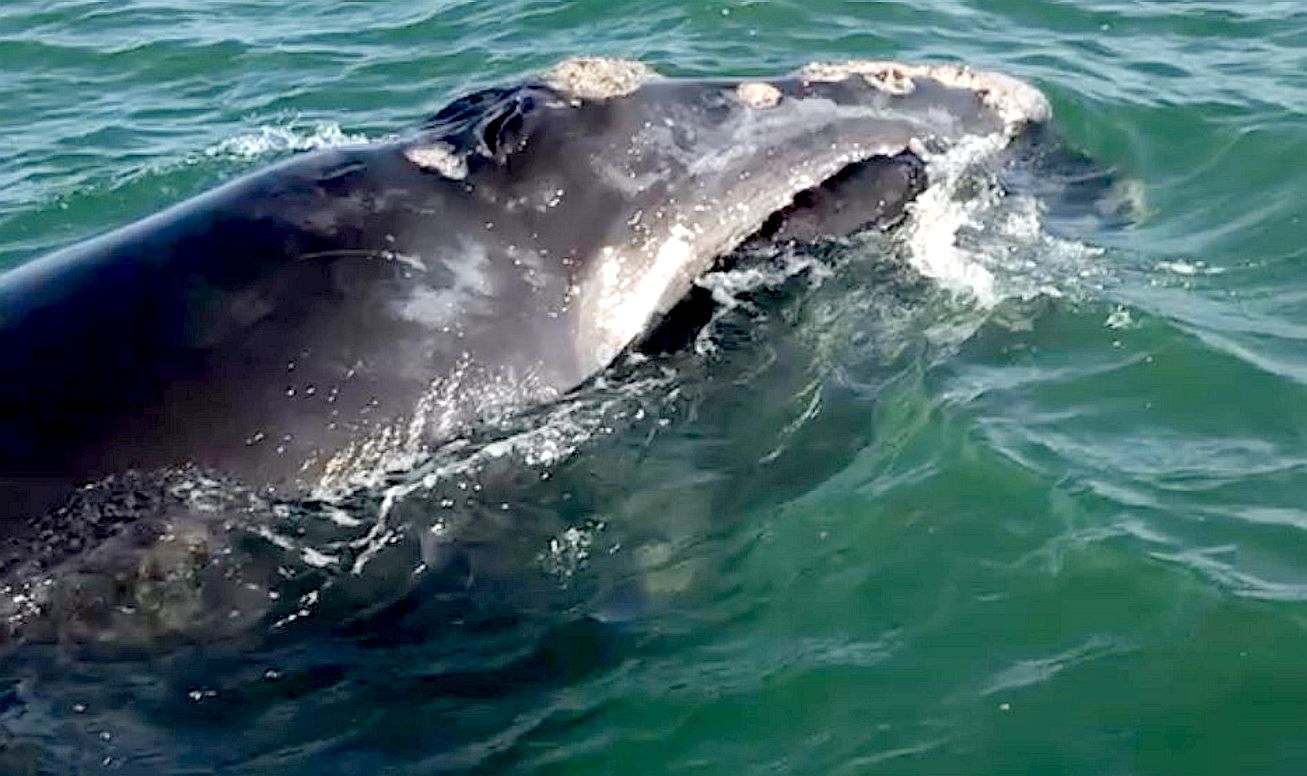
DICTIONARY AMBIGUITY
Black whale - in American English - a black,
dolphin-like whale, Globicephala melaena, of the North Atlantic. Also called: blackfish.
Black whale - in British English - another name for pilot whale.
Pilot whale - in British English - any of several black toothed whales of the genus
Globicephala, such as G. melaena, that occur in all seas except polar seas: family
Delphinidae. Also called: black whale, blackfish.
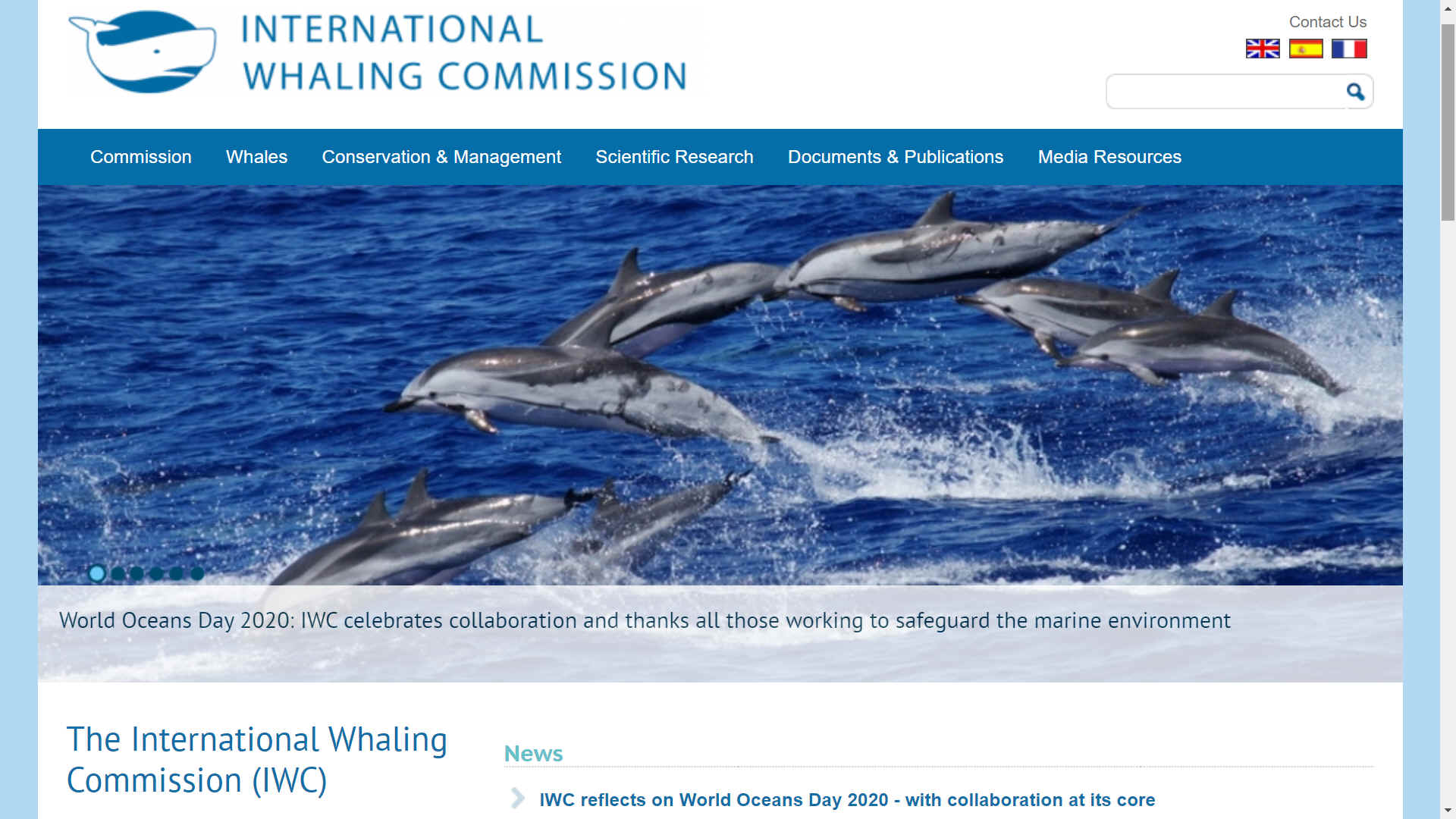
IWC is a voluntary
international organization and is not backed up by treaty, therefore,
the IWC has substantial practical limitations on its authority. First,
any member countries are free to simply leave the organization and
declare themselves not bound by it if they so wish. Second, any member
state may opt out of any specific IWC regulation by lodging a formal
objection to it within 90 days of the regulation coming into force (such
provisions are common in international agreements, on the logic that it
is preferable to have parties remain within the agreements than opt out
altogether). Third, the IWC has no ability to enforce any of its
decisions through penalty imposition.
Please use our
A-Z INDEX to
navigate this site





